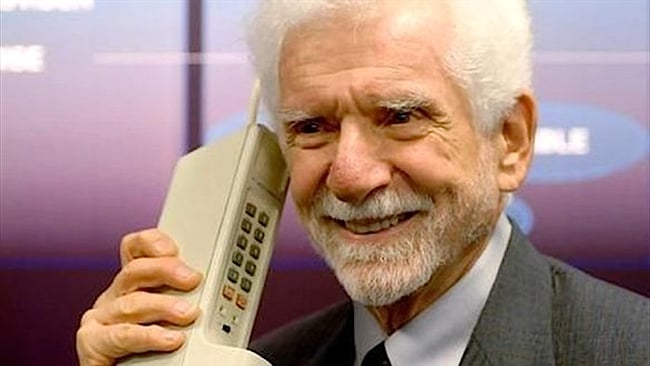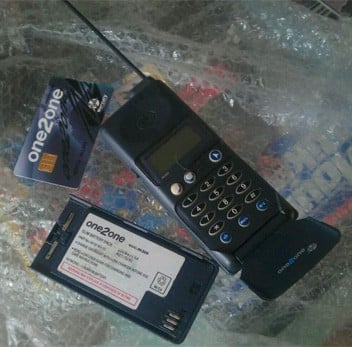This article is more than 1 year old
What killed Motorola? Not Google! It was Moto's dire software
Ex-Moto director Rockman tiptoes through the code graveyard
Feature The Motorola we used to know is dead. After it was split in two, Google bought phone maker Motorola Mobility in May this year, leaving the profitable equipment biz Motorola Solutions to live on.
Then the ad giant decided to lay off 20 per cent of the Moto Mobility workforce. Although this was all relatively sudden, the fall of the company - an outfit that opened its doors nearly a century ago - can be traced back to the late 1990s.
The stated aim of the Googorola love-in was to foster a boutique manufacturer of devices to run Android, Google's mobile operating system. Google was also keen to get its hands on Moto's incredible library of intellectual property, which included many great innovations in radio technology, mechanical engineering, electronics and production engineering. Yet many of the people who made this happen are busy updating their profiles on LinkedIn. It seems that Google isn’t looking to Motorola to be a source of future intellectual property.
(The top designers at Moto are not hard to spot, by the way - just look at the staff passes; get a patent awarded and it goes on your company record. Collect 50 and you get a gold badge with your name on it.)
How did Motorola grow to become one of the biggest companies in the world, and at one point hold a dominant market share? In a word: hardware.
And how did Motorola lose it, and end up with the major part of the company bought by Google? In a word: software.
Where it all started: The Galvin brothers' golden years
Motorola’s background is radio: it was founded in 1928 as Galvin Manufacturing Corporation by brothers Paul and Joseph Galvin. It was run by members of the family until 2004 when the board ousted Paul's grandson Chris. The name change came in 1947 when the company's car and two-way radios sold under the Motorola brand were well established.
Sales of equipment to the military were substantial: Motorola produced the first FM radios usable in the field, although the kit was the size of a rucksack. The company followed technology trends with television – including the world’s first rectangular TV tube - and, off the back of this, an early use of transistors. This led to chip design and manufacture.
Motorola's understanding of consumer and two-way radios in the 1960s meant it was well placed to work on emerging cellular communications. Motorola vice-president Marty Cooper demonstrated the first handheld phone in 1973 and it was a chunky beast. He said: "Battery lifetime was 20 minutes, but that wasn't really a big problem because you couldn't hold that phone up for that long." The first infrastructure to support calls from handhelds was sold in 1982, and in 1983 the DynaTAC phone was launched. The first GSM products were launched in 1991.

Martin Cooper with the DynaTAC prototype from 1973
Most of the heroes of the company worked in hardware. Ralph Pini joined as a bench engineer in 1976 and rose to CTO, leaving in 2004 to teach at the University of Illinois.
The move to digital consumer mobiles was hotly contested in the Motorola boardroom, but Pini made the right bet and is probably the person who created the value Google recently bought.


Old phones, classic look: One2One Motorola M300 (1993) and Motorola StarTAC (1996)
M300 source: Getmefixed.co.uk
But not every bet paid off. A couple of Motorola directors on a cruise thought it would be great if they could make calls while on holiday, and thus space communications biz Iridium was born. It has a network of 66 satellites giving global coverage to satellite phones and pagers.
The name comes from the element Iridium, which has an atomic weight of 77. This was the expected number of birds to form the satellite constellation, launched between 1997 and 1998, but in the end 11 fewer were needed. The other thing that was overestimated was the number of people who would want to buy the bulky and expensive sat phones.
Motorola spent $6bn on the project, but when the separate Iridium company went into Chapter 11 bankruptcy protection in 1999 it was bought by private investors for $25m. Those sugar daddies are believed to have a very close relationship with the FBI, and it’s publicly stated that the biggest organisation that uses Iridium is the US Department of Defense.
While most consumers would rather have a cellular phone, others found significant advantages in a system that cannot be easily intercepted by the local authorities. As such, it has always been illegal to take an Iridium phone into Syria.
However the technical capability to build a satellite phone system is not to be sniffed at - and the ability to take a $6bn bath shows how big Motorola had grown in 60 years. The company has built infrastructure, the pioneering "professional social network" iDEN, two-way pagers, the first tri-band phone and the first GPRS phone. Talk to communications network engineers and you'll find they preferred the Motorola kit for radio performance. Moto’s expertise was so much greater than just making phones. Its chip division Motorola SPS, later called Freescale, pushed Motorola beyond building phones out of other people’s parts: its deep understanding of radio was the best in the world and there was an academic focus on research and development.
These deep-rooted hardware skills were barely recognised by the senior management. Things just worked. Tri-band and quad-band radios, something all the rivals bar the Danish company Dancall struggled with, helped the company to compete confidently and globally.
It was the engineering focus that also led mobile operator Three to make Motorola its launch partner for its 3G network. The handsets were big and clunky, but it was three years before Nokia had something competitive.
For the first 60 the company’s brilliance in hardware and excellence in radio meant Motorola grew spectacularly. That superiority never faded, but as software started to become more important it wasn’t enough.
